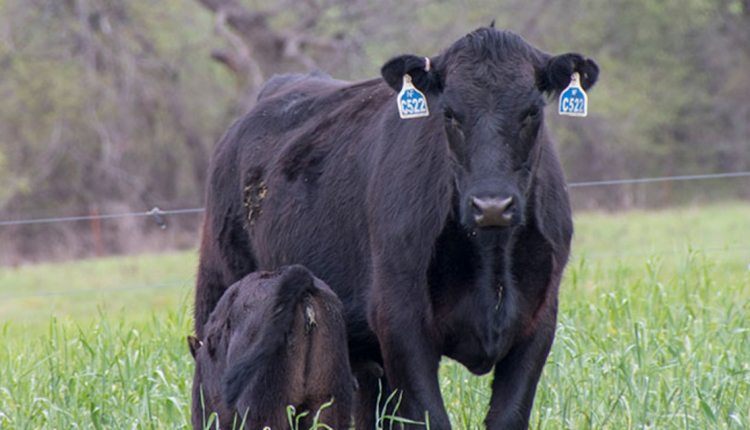
Ensuring a complete balance of minerals is an important step for raising cattle year-round, but even more so right now. Southeastern states experience issues with grass tetany most commonly during mid-February to mid-April. This disorder is associated with low magnesium (Mg) levels in the blood and cerebrospinal fluid.
Katie Mason, an extension beef cattle nutrition specialist with the University of Tennessee, recently offered a few strategies to help prevent the effects of grass tetany, which is also known as hypomagnesemia.
Soil plays a role
Soil characteristics often contribute to the risk for cattle developing grass tetany. These include such factors as the level of magnesium in the soil, soil temperature, and soil moisture. Soils high in potassium and nitrogen can inhibit magnesium uptake by plants, which in turn creates a lack of available magnesium for grazing cattle.
“Pastures deficient in magnesium may be limed with dolomitic limestone, but this may not fully solve the problem, especially in waterlogged soils that are common this time of year in the Southeast,” Mason notes. She also suggests incorporating legumes into the pasture, which may boost magnesium levels compared to grass pastures alone. Another mitigation strategy is to wait until grass is 4 to 6 inches in height before grazing.
Monitor cattle
If you can’t prevent grass tetany, be sure to know and actively look for symptoms in cattle, which may include nervousness, muscle twitching, staggers when walking, and later, the animal may go down on its side with muscle spasms and convulsions. If animals are not treated in time, cattle may die. There is often not a long period of time between cattle showing symptoms and death, which is why it’s important to routinely observe cattle closely during early spring.
Although grass tetany can affect younger cows, older animals with young calves are most susceptible. When blood magnesium levels drop, mobilization of additional magnesium from bones is more difficult for the lactating, mature cow.
Mason encourages using a high-magnesium mineral to help prevent grass tetany. Most standard mineral mixes have between 1% and 4% magnesium. A “hi-mag” mineral contains 12% to 14% magnesium.
“Magnesium is not stored in the body, so it is important for cattle to meet their intake requirements daily,” Mason says. “To prevent grass tetany, it is desirable to have magnesium intake of about 0.6 ounces per day. While some of this may be supplied by forage and feed, it may be desirable to obtain most or all of this level from supplemental mineral, especially in high-risk situations.”
Mason offers the following guidelines for supplementing magnesium:
• Provide at least 1 ounce per day of magnesium oxide to yield at least 0.6 ounces of magnesium.
• The supplement should contain either magnesium oxide or magnesium sulfate (not magnesite or dolomitic limestone).
• Generally, loose mixtures are preferred in situations where there is a history of grass tetany, but blocks may be suitable in low-risk situations.
• Keep hay available until cattle completely stop consuming it.
• A supplement containing cereal grains will provide the energy that cattle need to overcome energy deficits and may help prevent grass tetany.
• After starting cattle on high-magnesium supplements, continue until the “danger” period is past in the late spring.

C.J. Weddle served as the 2020 Hay & Forage Grower editorial intern. She currently attends Mississippi State University, majoring in agricultural education, leadership, and communications. She grew up on a farm in Vardaman, Miss., where her family raises sweet potatoes and soybeans.

